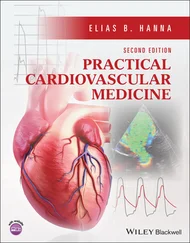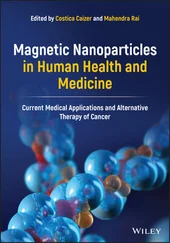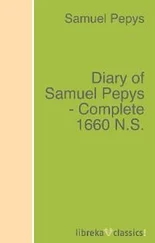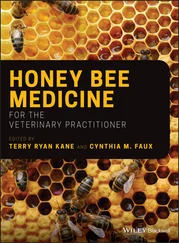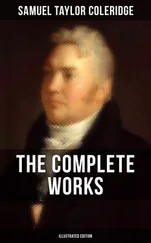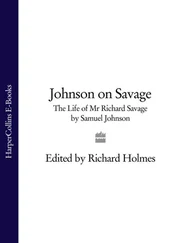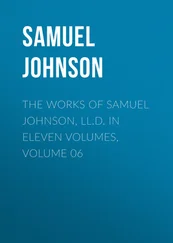15. In place of extinguishing the disease rapidly, without exhaustion of the strength and without going about the bush, with homogeneous, dynamic medicinal agents acting directly on the diseased points of the organism, as homoeopathy does.
This derivation, as it is called, was and continues to be one of the principal modes of treatment of the old school of medicine.
In this imitation of the self-aiding operation of nature, as some call it, they endeavored to excite, by force, new symptoms in the tissues that are least diseased and best able to bear the medicinal disease, which should draw away16 the primary disease under the semblance of crises and under the form of excretions, in order to admit of a gradual lysis by the curative powers of nature.17
16. Just as if anything immaterial could be drawn away! So that here too was the notion of a substance and a morbific matter, excessively subtile though it might be supposed to be!
17. It is only the slighter and acute diseases that tend, when the natural period of their course has expired, to terminate quietly in resolution, as it is called, with or without the employment of not very aggressive allopathic remedies; the vital force, having regained its powers, then gradually substitutes the normal condition for the derangement of the health that has now ceased to exist. But in severe acute and in chronic diseases which constitute by far the greater portion of all human ailments, crude nature and the old school are equally powerless; in these, neither the vital force, with its self-aiding faculty, nor allopathy in imitation of it, can affect a lysis, but at the most a mere temporary truce, during which the enemy fortifies himself, in order, sooner or later, to recommence the attack with still greater violence.
This they accomplished by means of diaphoretic and diuretic remedies, blood-lettings, setons and issues, but chiefly by irritant drugs to cause evacuation of the alimentary canal, sometimes upwards by means of emetics, sometimes (and this was the favorite plan) downwards by means of purgatives, which were termed aperient and dissolvent18 remedies.
18. An expression which likewise betrays that they imagined and presupposed a morbific substance, which had to be dissolved and expelled.
To assist this derivative method they employed the allied treatment by counter-irritants; woolen garments to the bare skin, foot-baths, nauseants, inflicting on the stomach and bowels the pangs of hunger (the hunger-treatment), substances to cause pain, inflammation, and suppuration in near or distant parts as the application of horseradish, mustard plasters, cantharides, blisters, mezereum setons, issues, tartar-emetic ointment, moxa, actual cautery, acupuncture, etc.; here also following the example of crude unassisted nature, which endeavors to free herself from the dynamic disease (in the case of a chronic disease, unavailingly) by exciting pain in distant parts of the body, by metastases and abscesses, by eruptions and suppurating ulcers.
It was evidently no rational principle, but merely imitation, with the view of making practice easy that seduced the old school into those unhelpful and injurious indirect modes of treatment, the derivative as well as the counter-irritant; that led them to this inefficacious, debilitating and hurtful practice of apparently ameliorating diseases for a short time, or removing them in such a manner that another and a worse disease was roused up to occupy the place of the first. Such a destructive plan cannot certainly be termed curing.
They merely followed the example of crude instinctive nature in her efforts, which are barely19 successful even in the slighter cases of acute disease; they merely imitated the unreasoning life-preserving power when left to itself in diseases, which entirely dependent as it is upon the organic laws of the body, is only capable of acting in conformity with these laws and is not guided by reason and reflection – they copied nature, which cannot, like an intelligent surgeon, bring together the gaping lips of a wound and by their union effect a cure; which knows not how to straighten and adjust the broken ends of a bone lying far apart and exuding much (often an excess of) new osseous matter; which cannot put a ligature on a wounded artery, but in its energy causes the patient to bleed to death; which does not understand how to replace a dislocated shoulder, but by the swelling it occasions round about it soon presents an obstacle to reduction; which in order to remove a foreign body from the cornea, destroys the whole eye by suppuration; which, with all its efforts can only liberate a strangulated hernia by gangrene of the bowel and death; and which, by the metaschematisms it produces in dynamic diseases, often renders them much worse than they were originally. But more, this irrational vital force receives into our body without hesitation, the greatest plagues of our terrestrial existence, the spark that kindles the countless diseases beneath which tortured mankind has groaned for hundreds and thousands of year, the chronic miasms – psora, syphilis, sycosis – not one of which can it diminish in the slightest degree far less expel single-handed from the organism; on the contrary, it allows them to rankle therein until often after a long life of misery, death at last closes the eyes of the sufferer.
19.. In the ordinary school of medicine, the efforts made by nature for the relief of the organism in diseases where no medicine was given, were regarded as models of treatment worthy of imitation. But this was a great error. The pitiable and highly imperfect efforts of the vital force to relieve itself in acute diseases is a spectacle that should excite our compassion, and command the aid of all the powers of our rational mind, to terminate the self-inflictedtorture by a real cure. If nature is unable to cure homoeopathically a disease already existing in the organism, by the production of another fresh malady similar to it (¤ 43-46), which very rarely lies in her power (¤ 50), and if to the organism alone is left the task of overcoming, by its own forces without external aid, a disease newly contracted (in cases of chronic miasms its power of resistance is quite inefficacious), we then witness nought but painful, often dangerous, efforts of nature to save the individual at whatever cost, which often terminate in extinction of the earthly existence, in death.
Little as we mortals know of the operations that take place in the interior economy in health – which must be hidden from us as certainly as they are patent to the eye of the all-seeing Creator and Preserver of his creatures – just as little can we perceive the operations that go on in the interior in disturbed conditions of life, in diseases. The internal operations in diseases are manifested only by the visible changes, the sufferings and the symptoms, whereby alone our life betrays the inward disturbance; so that in no given case can we ascertain which of the morbid symptoms are caused by the primary action of the morbific agent, which by the reaction of the vital force for its own relief. Both are inextricably mixed up together before our eyes, and only present to us an outwardly reflected picture of the entire internal malady, for the fruitless efforts of unassisted vitality to terminate the sufferings are themselves sufferings of the whole organism. Hence, even in those evacuations termed crises, which nature generally produces at the termination of diseases which run a rapid course, there is frequently more of suffering than of efficacious relief.
What the vital force does in these so-called crises, and how it does it, remains a mystery to us, like all the internal operations of the organic vital economy. One thing, however, is certain: that in all these efforts more or less of the affected parts are sacrificed and destroyed in order to save the rest. These self-aiding operations of the vital force for the removal of an acute disease, performed only in obedience to the laws of organic life and not guided by the reflection of an intellect, are mostly but a species of allopathy; in order to relieve the primarily affected organ by a crisis, an increased, often violent, activity is excited in the excretory organs, to draw away the disease from the former to the latter; there ensue vomitings, purgings, diuresis, diaphoresis, abscesses, etc., in order, by this irritation of distant parts, to effect a sort of derivation from the primarily diseased part, and the dynamically affected nervous power seems to unload itself in the material product.
Читать дальше

